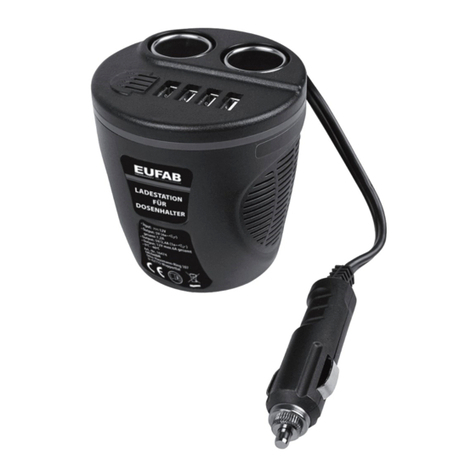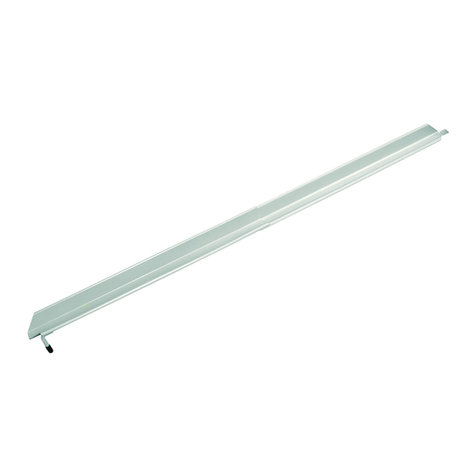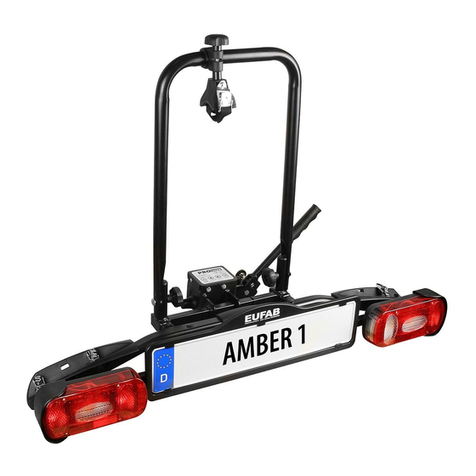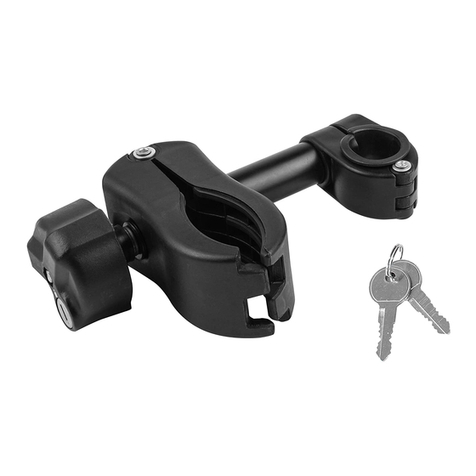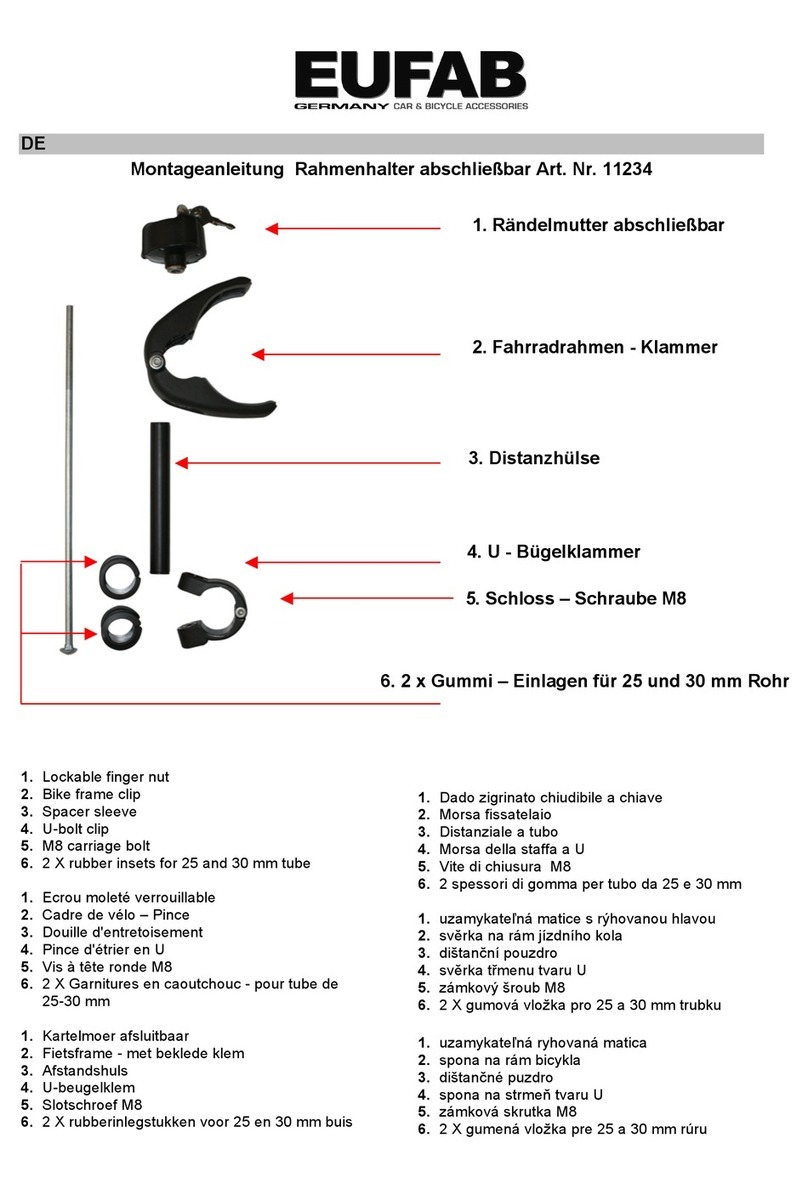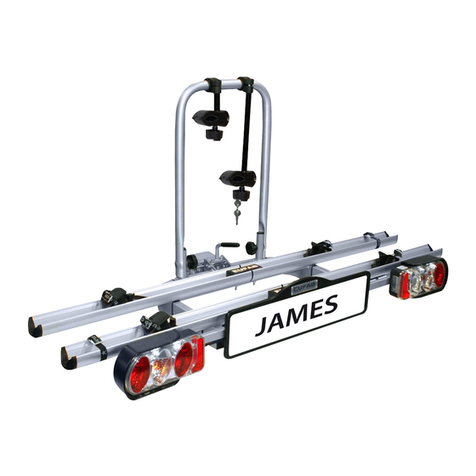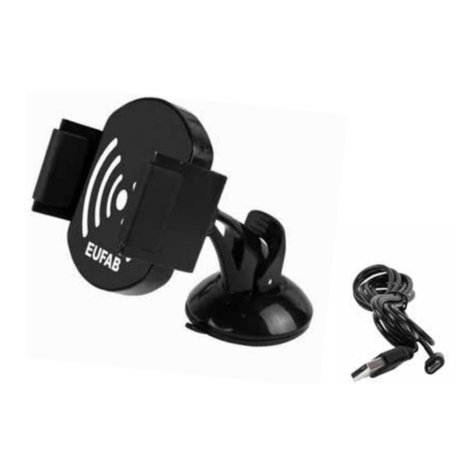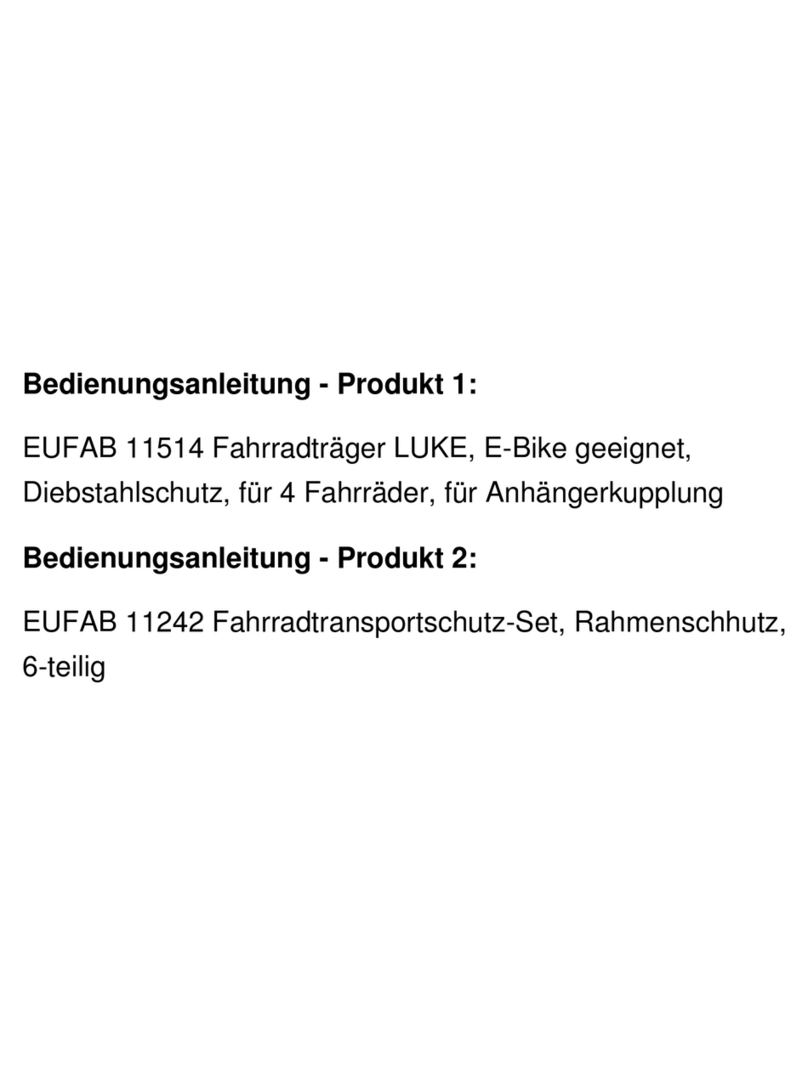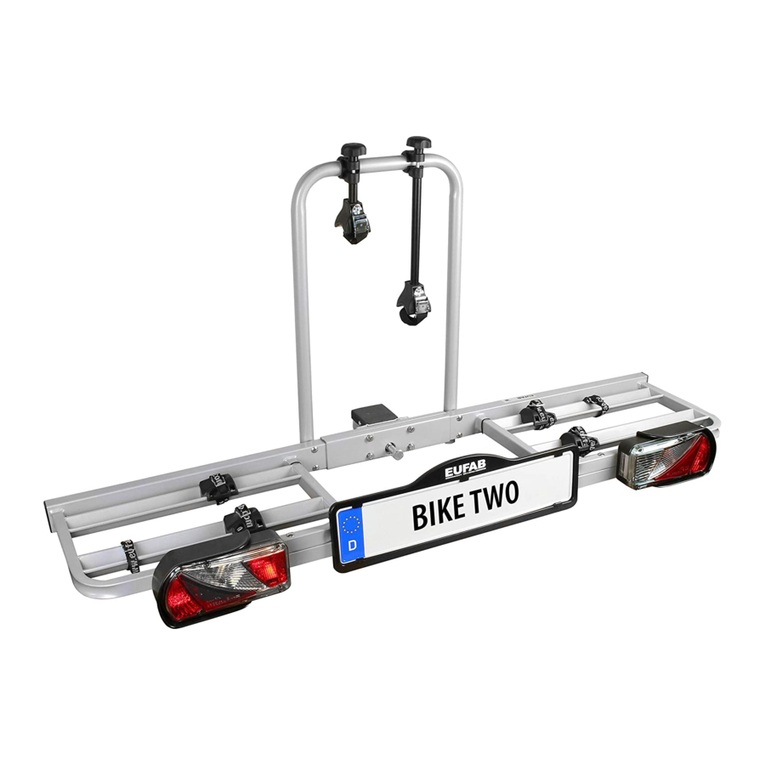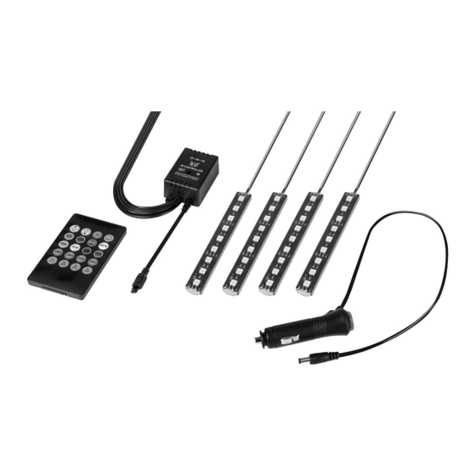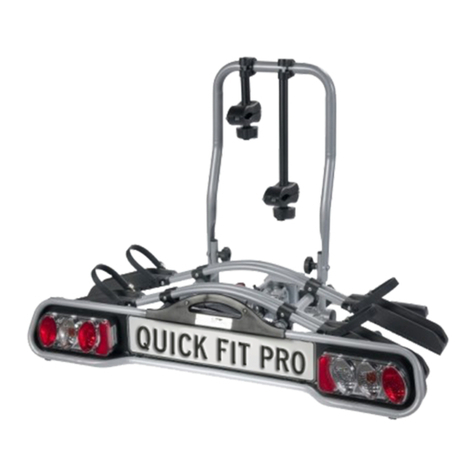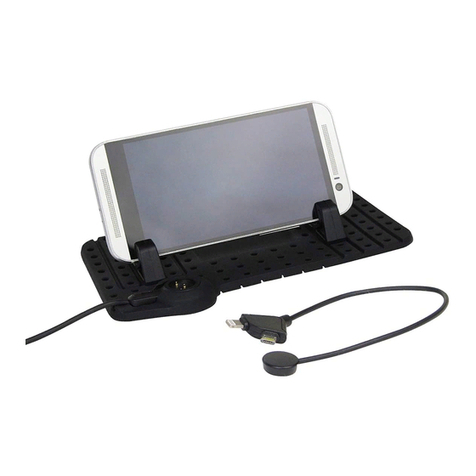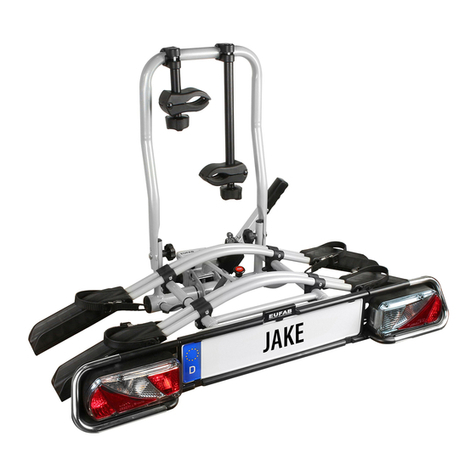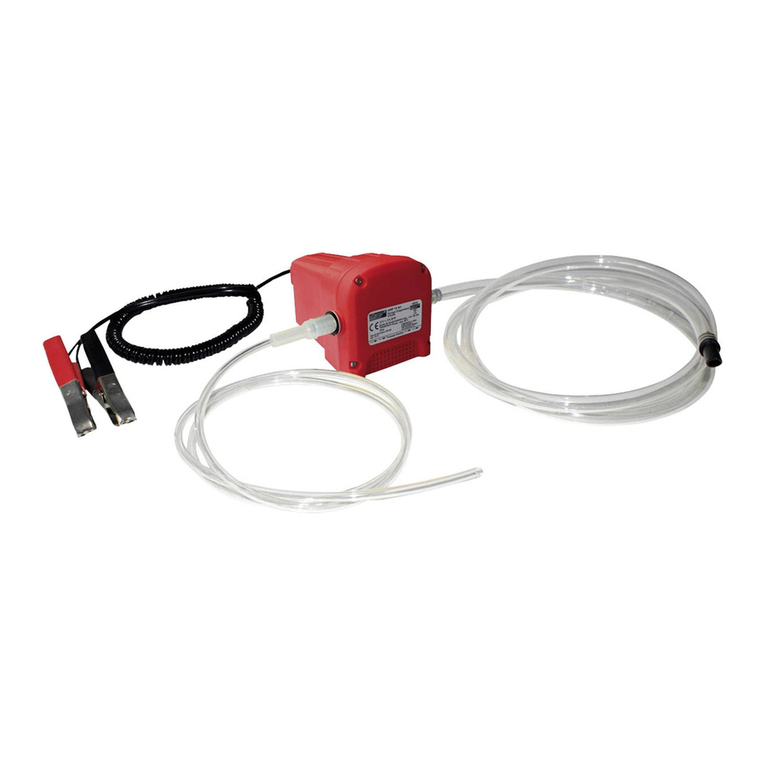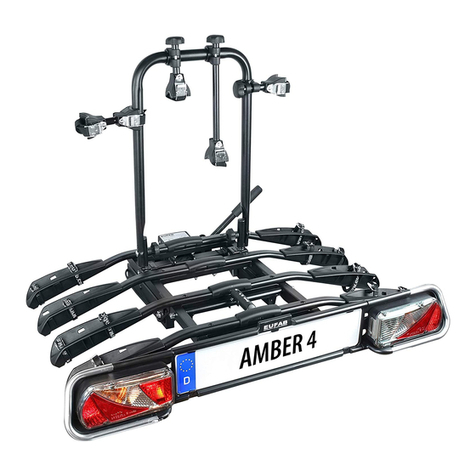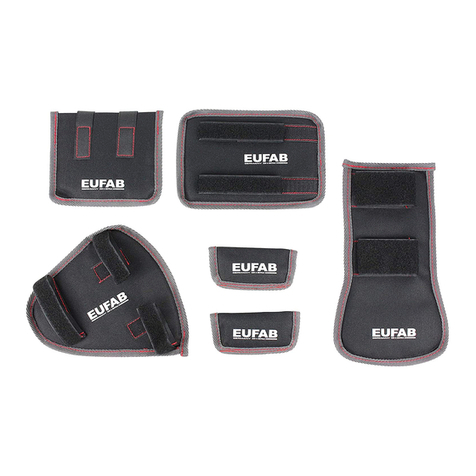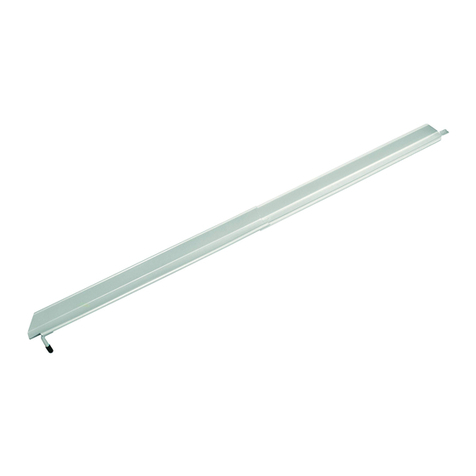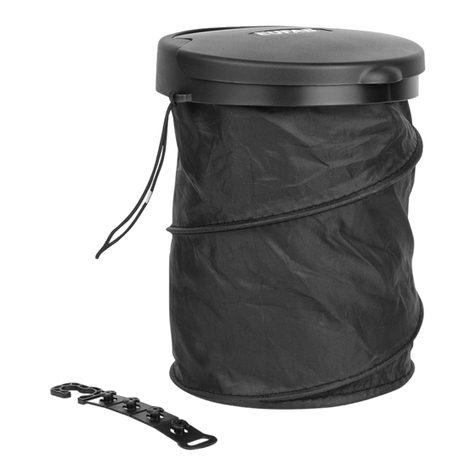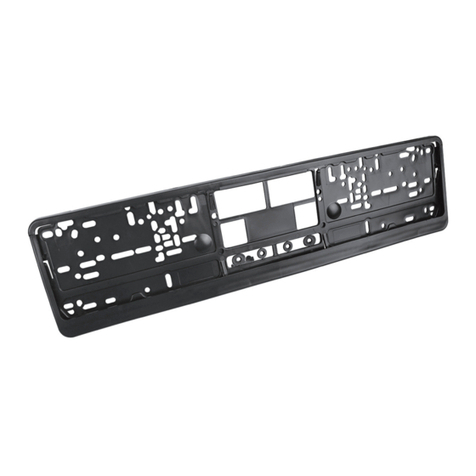
7
3. ISTRUZIONI PER L’USO E INDICAZIONI IMPORTANTI
• Questo portapacchi è adatto solo per vetture con mancorrente.
• Per garantire un montaggio corretto e un funzionamento perfetto del
portapacchi, rispettare scrupolosamente le istruzioni per il montaggio!
• Considerare sempre che si è responsabili del montaggio corretto e
accurato del portapacchi. Durante il montaggio assicurarsi che le stae
di supporto non sporgano dai bordi esterni del tetto e che per i
portapacchi montati sul tetto il cui sistema costruttivo non stabilisce
la distanza tra la staa di supporto anteriore e quella posteriore, essa
dovrebbe essere di almeno 700 mm. Prima di intraprendere il viaggio,
dopo aver percorso un breve tratto e almeno ogni 300 km, controllare
che sia il portapacchi sia il carico siano ssati e bloccati saldamente. I
colli non devono sporgere eccessivamente dalla supercie di carico.
• Considerare sempre che la tenuta di strada della vettura a portapacchi carico
(sensibilità al vento laterale, comportamento in curva e in caso di frenata),
cambia.
• Le stae di supporto non devono sporgere dai bordi del tetto e/o dalle
canaline (eventualmente accorciare).
• Per motivi di sicurezza stradale e di risparmio energetico, se non usato il
portapacchi dovrebbe essere tolto.
• Fissare il carico con mezzi adatti (p. es. bloccare in modo sicuro con
cinghie, elastici, ecc.).
• Se non indicato diversamente dal produttore della vettura, la distanza
minima tra i due supporti dovrebbe essere di 700 mm.
• Caricare il portapacchi uniformemente con un baricentro possibilmente
basso e non superare il carico del tetto indicato dal produttore dell’ auto.
• La portata consentita si compone dal peso proprio del portapacchi (4,7
kg) e dal carico utile.
• La portata consentita del portapacchi è di 75 kg e deve essere distribuita
uniformemente.
• In caso di trasporto di merci lunghe, ssare l’estremità anteriore al
paraurti. Adeguare la velocità al carico.
4. COME CONTATTARCI
EAL GmbH
Otto-Hausmann-Ring 107
42115 Wuppertal, Germania
+49 (0)202 42 92 83 0
+49 (0) 202 42 92 83 – 160
info@eal-vertrieb.com
www.eal-vertrieb.com
INDICE
BASIC PLUS PORTAPACCHI PER MANCORRENTE
1. SPÉCIFICATIONS _______________________________7
2. ISTRUZIONI PER IL MONTAGGIO _____________________7
3. ISTRUZIONI PER L’USO E INDICAZIONI IMPORTANTI _________7
4. COME CONTATTARCI ____________________________7
2. ISTRUZIONI PER IL MONTAGGIO
• Aprire i coperchi a vite con un cacciavite o una moneta.
• Svitare le viti della clip di ssaggio (ill. 2).
• Svitare le viti di regolazione. Mettere i portapacchi sul mancorrente
mantenendo una distanza di ca. 700 mm tra loro.
• Fissare il portapacchi sul mancorrente stringendo leggermente la vite di
regolazione.
• Stringere le viti della clip di ssaggio.
• Stringere le viti di regolazione.
• Controllare la saldezza del ssaggio cercando si smuovere il portapacchi.
• Se necessario, stringere ulteriormente le viti di regolazione.
• Successivamente riapplicare i coperchi a vite e chiudere.
1. SPÉCIFICATIONS
Max. Distanza/spessore della ringhiera: noa 1,10malcentro/ca. 30mm
Altezza minima della ringhiera: ca. 25 mm
Lunghezza del lingotto: ca. 1200 mm
Prolo di supporto (LxP): ca. 35 x 20 mm
Peso proprio: ca. 4,7 kg
Max. capacità di carico: 75 kg
• Rispettare la velocità consigliata indicata. Per evitare danni al tetto
della vettura, il montaggio e lo smontaggio del portapacchi dovrebbe
essere eseguito da due persone.






